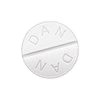Medication Overview
Often used in the clinical setting, Promethazine is a phenothiazine derivative that exerts its effects primarily as an antihistamine with strong sedative properties. Its chemically distinct structure confers it a broad spectrum of pharmacological activities. Established as a trusted medication since its introduction into medicine, it’s widely recognized for its efficacy in managing various conditions.
Indications and Uses
Promethazine is indicated for numerous applications, which include but are not limited to: allergy symptom relief, such as itching, runny nose, and sneezing; preventing and controlling motion sickness; as a sedative or sleep aid; and in combination with other medications, helping to manage pain after surgery. Moreover, it is also used as an adjunct in treating anaphylactic reactions and for its antiemetic properties to mitigate nausea and vomiting.
Dosage Instructions
The advised dosage of Promethazine can vary depending on the condition being treated and the patient’s age, medical history, and overall health. For allergies, a common adult dose might range from 25 to 50 milligrams (mg) before sleep, or 12.5 to 25 mg twice daily. For motion sickness, an initial dose of 25 mg is typically used, with doses of up to 25 mg repeated as needed every 24 hours.
In pediatric patients, dosage must be carefully calibrated to the child’s weight and clinical condition, often starting at the lower end of the dosage range. It is imperative that Promethazine is used with extreme caution in children, and it should not be used in children less than two years old due to the risk of respiratory depression.
Administration and Precautions
Promethazine can be administered orally in tablet or syrup form, rectally via suppository, or via intravenous or intramuscular injection. The oral route is most common for outpatient or at-home use, whereas injections are reserved for inpatient or acute settings.
Particular care should be taken with intravenous administration due to risks of severe tissue injury, including gangrene. It should only be administered into a secure intravenous line with proper monitoring.
Exercise caution when engaging in activities requiring mental alertness, such as driving or operating machinery, as Promethazine can cause significant drowsiness. Alcohol intake should be limited as Promethazine amplifies the sedative effects of alcohol.
Contraindications and Warnings
Promethazine is contraindicated in individuals with known hypersensitivity to phenothiazines, in comatose states, and in patients under two years old. Caution is advised when used in individuals with certain medical conditions such as respiratory impairments, angle-closure glaucoma, peptic ulcer disease, bone marrow depression, and in those taking monoamine oxidase inhibitors (MAOIs).
Drug Interactions
Patients should be well-informed about potential pharmaceutical interactions. Promethazine potentiates the sedative effects of certain drugs, such as opioids, sedatives, and anxiolytics. Conversely, its efficacy may be reduced by certain antibiotics and anticonvulsants. It is vital to discuss all medications, including over-the-counter drugs and herbal supplements, with a healthcare provider to avoid adverse interactions.
Side Effects and Adverse Reactions
Side effects from Promethazine are varied but often include drowsiness, dizziness, constipation, blurred vision, dry mouth, or difficulty urinating. Some may experience more severe reactions such as confusion, jaundice, severe hypotension, or respiratory depression. If severe side effects or hypersensitivity reactions occur, medical advice should be sought promptly.
Overdose and Emergency Measures
An overdose of Promethazine can be a medical emergency. Signs include profound drowsiness, respiratory depression, agitation, hallucinations, convulsions, and in extreme cases, loss of consciousness or coma. If an overdose is suspected, immediate medical attention is necessary. Treatment focuses on supportive measures, secure airway maintenance, and, if necessary, activated charcoal administration to limit absorption if the patient presents within a few hours of ingestion.
Special Populations
When prescribing Promethazine, special consideration is necessary for vulnerable populations. This includes the elderly, who may be more susceptible to hypotension and extrapyramidal side effects, and pregnant or breastfeeding women, due to the potential for adverse effects on the fetus or newborn. Dosing needs particular attention in these groups, and the risks and benefits should be thoroughly assessed.
Storage and Handling
Promethazine should be stored at room temperature, away from light and moisture. It should be kept out of reach of children and pets. After use, dispose of any unused medication responsibly, ideally through a medicine take-back program. If one is not available, dispose of the Promethazine as instructed by a healthcare provider or pharmacist, not via wastewater or household waste.
This compendium provides a detailed overview of Promethazine, embracing the diverse areas of its application, cautionary details, and pragmatic recommendations for its use, storage, and disposal. Its role in managing symptoms of varying conditions is underpinned by the requisite observance of care in its administration. Patients or caregivers are urged to have a dialogue with healthcare providers to ensure its optimal and safe use.




Reviews
There are no reviews yet.